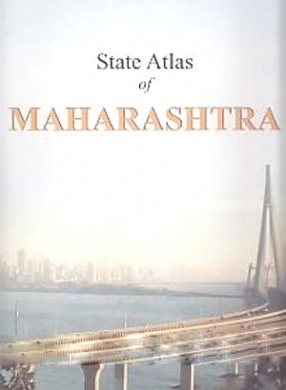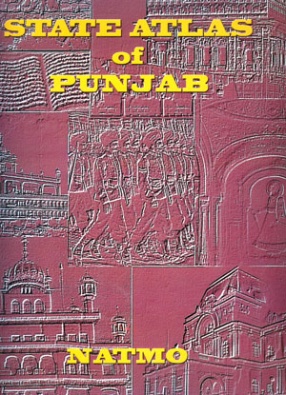
31 books





















The present volume 'Geography and Environment: Issues and Challenges' is a festschrift in honour of Prof. S.L. Kayastha. It contains the contributions from the students, colleagues and admirers of Professor Kayastha from all corners of the country. This volume revolves around the work of Prof. S.L. Kayastha. Here an attempt has been made to expand his work, especially the conceptual development of different environment related issues.
This book has total 24 well ...


The book is a detailed account of the establishment and development of the Zoological Garden in Kolkata, highlighting the contributions of some noted figures especially R. B. Sanyal who was closely associated with the zoological garden especially in its initial phase. Beginning with the proposal for the setting up of a zoo, the vision behind it and the choice of the site, it discusses its development in various phases: the initial phase, the transitional phase ...








1. Uttar Pradesh (1:1,500,000); 2. Bihar (1:750,000); 3. Rajasthan (1: 1, 500, 000); 4. Maharashtra (1: 1, 500, 000); 5. Andhra Pradesh (1: 1, 500, 000); 6. Tamil Nadu (1: 1, 000, 000); 7. Punjab (1:500, 000); 8. Himachal Pradesh (1:500, 000); 9. Jammu & Kashmir (1:2,000,000; 10. Meghalaya (1:500,000); 11. Assam (1:1,000,000); 12. Manipur (1:500,000); 13. Tripura (1:250, 000); 14. Goa (1:250, 000); 15. Nagaland (1:500,000); 16. Mizoram (1:500,000); 17. ...


Gandhiji, the father of the nation, considered Punjab the most important province of India. It is the land where the first civilized man trod on earth endowed with the bounties of nature. The state is blessed by seven perennial rivers and innumerable tributaries. These rivers and their tributries spread carpets of alluvial soil on its vast plains.
The objective of this atlas is to provide a basis for all round development. This atlas has an additional ...


This atlas on the state of Bihar is adorned with a fascicule of thirty six maps. Here an attempt has been made to portray the overall appraisal of the state’s environment and resources along with human impact. Keeping view of the information available, the thematic maps at suitable scales and layout have been chosen. In order to do so, authentic district and block level available data was procured from different government offices which have been analysed, ...


With the development in several disciplines lately studying environment, the spatial integration of their finding has become essential. In fact, the spatial aspects has become extremely important as environmental issues in planning and development initiative can no longer be ignored. The study of their spatial pattern and linkags have become a challange in the field of geography. As an initial step to review the whole situation, the environmental issues have been ...

Environment and population have been studied from different angles, by different disciplines, and for a variety of reasons. These topics have been analysed separately or even together. A close relationship between the two is not a formidable conclusion. But recently such studies have gained an additional dimension due to greater emphasis on sustainability which in turn is linked with development. Environment population and development has to be studied together ...

This atlas is not a collection of locational maps of the conventional type. It contains a number of specialized maps, based on field and library work, carried out by the author for a number of years. The observations and statistics were then plotted on large scale maps, mainly for the purpose of teaching the geography of Bengal to University post-graduate students. Some of the maps were subsequently exhibited in a geographical exhibition, opened in Calcutta by ...

The National Atlas and Thematic Mapping Organisation (NATMO) was entrusted by the Department of Science and Technology, New Delhi of the Government of India to organisse the year long programmes to Commemorate the centenary celebrations of Padmabhusan Prof. S. P. Chatterjee, during the period 22nd February 2002 to 22nd February, 2003. In this connection, the NATMO organised the seminar, entitled "National Seminar on Geography and Applied Cartography", ...

Indian Ocean Atlas can be divided into three broad themes: physiographic characteristics and its bed, socio-historical, and economy, trade and natural resources of physical and economic importance. These themes are to meet the following objectives : (a) to reestablish India's intimate relationship with the ocean and the littoral countries, (b) to provide an assessment of the marine resources which would be required in near future, and (c) to provide a basis for ...

This time natmo included several maps of new themes in 10 volumes (previous edition was in eight volumes) consisting of 243 maps. All the maps in the present atlas prepared on the basis of latest available authentic data are designs of exclusively to provide an analitical study on the general and Environmental, Population, Economic and Social and cultural features of the country. Thus the atlas firms a great storehouse of information covering a wide spectrum of ...

In the new millennium, our country is to witness the existence of new states. One of them is the Uttaranchal. This is one of the latest additions to the existing twenty-five states. It is meant to meet the long-standing expectation of the people and also to become a viable tool for dynamic planning and development processes. Uttaranchal is primarily a mountainous and terai region consisting of thirteen districts with its temporary headquarters at Dehra Dun. The ...

The science dealing with the waters of the earth, their distribution on the surface and underground and the cycle involving evaporation, precipitation is known as 'hydrology'. The importance of this discipline was understood much earlier in our ancient civilization. The location of cities and important settlements along the rivers and near water bodies is the testimony of it. The lay out of settlements and building plans are with reference of the ...
